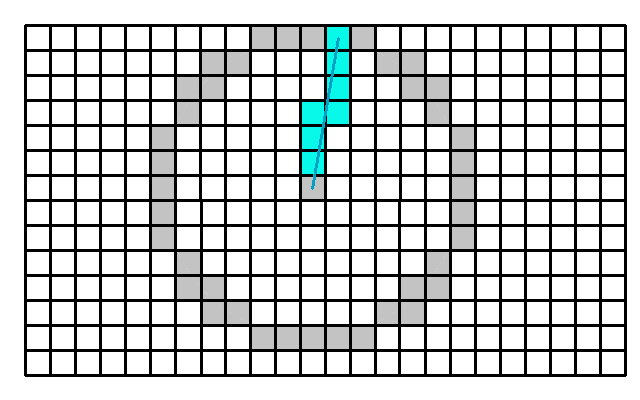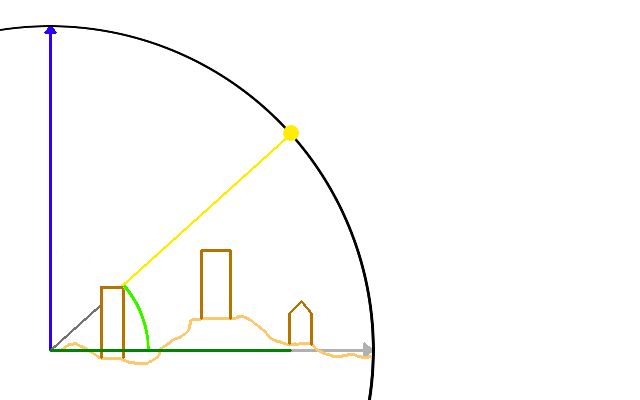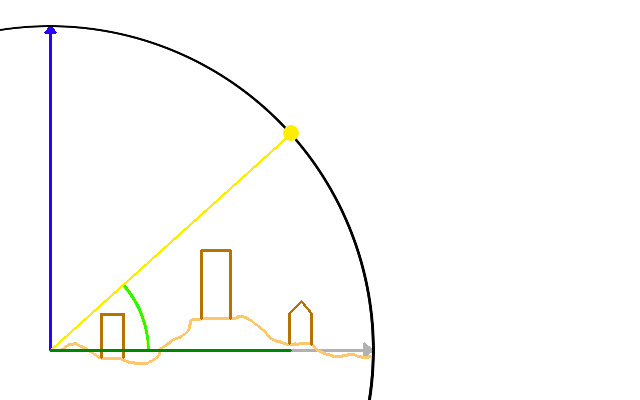Shade calculation model (Heat Overlay): Difference between revisions
Jump to navigation
Jump to search
No edit summary |
No edit summary |
||
| Line 1: | Line 1: | ||
The shade | Whether a cell is in the shade or not is an important factor the [[Heat_(Overlay)|Heat Overlay]]. The notion that a cell is shaded or not determined which PET function is used; PET<sub>sun</sub> or PET<sub>shade, night</sub>. In the model described by {{Template:Heat_DPRA_Report}}, cells can be shaded by buildings, terrain and foliage. | ||
The shade is dependent on the location of the sun. This in turn is dependent on the [[Dates_(Heat Overlay)|date and the time of day]] and the world location of the project. | |||
Since each timeframe result of a [[Heat_(Overlay)|Heat Overlay]] is related to a particular date and time of day, each time frame will have a related [[Sun_altitude_(Heat_Overlay)|sun altitude]] and [[Sun_azimuth_(Heat_Overlay)|sun azimuth angle]].. These angles are calculated automatically based on the world location of your project and the [[Dates_(Heat_Overlay)|date]] of the timeframe. | |||
[[File:Shade_top_down.png|500px]] | [[File:Shade_top_down.png|500px]] | ||
Revision as of 09:35, 20 September 2019
Whether a cell is in the shade or not is an important factor the Heat Overlay. The notion that a cell is shaded or not determined which PET function is used; PETsun or PETshade, night. In the model described by DPRA Heat stress report, cells can be shaded by buildings, terrain and foliage.
The shade is dependent on the location of the sun. This in turn is dependent on the date and the time of day and the world location of the project.
Since each timeframe result of a Heat Overlay is related to a particular date and time of day, each time frame will have a related sun altitude and sun azimuth angle.. These angles are calculated automatically based on the world location of your project and the date of the timeframe.







